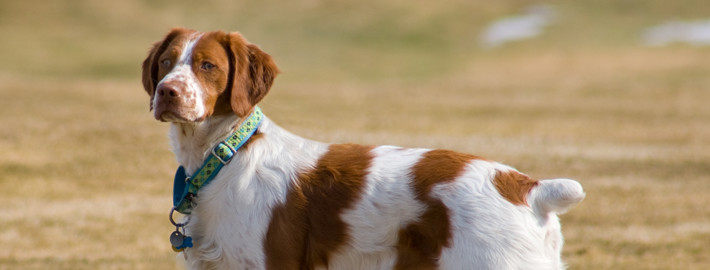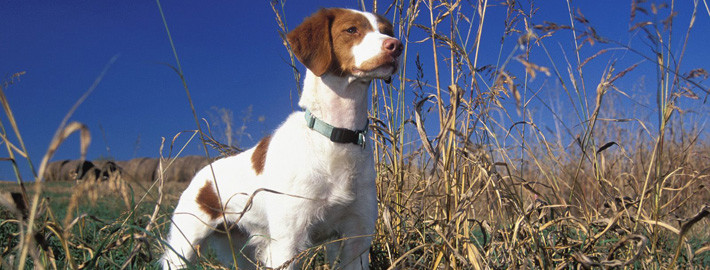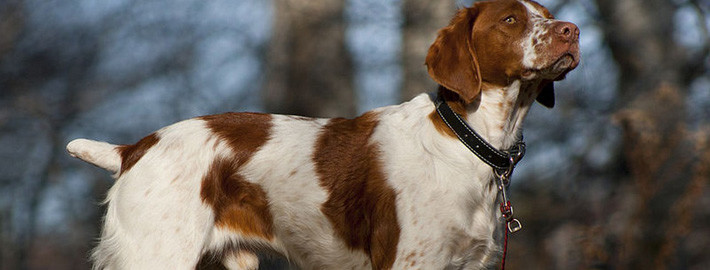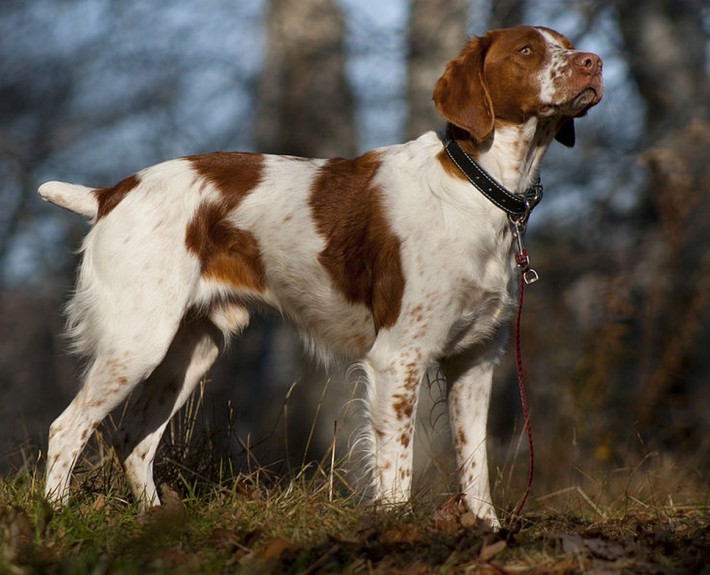What makes the Brittany Unique?
Although they were historically used for hunting game, Brittany dogs are also quite sociable and they make excellent companions.
Breed Groups
Page Contents
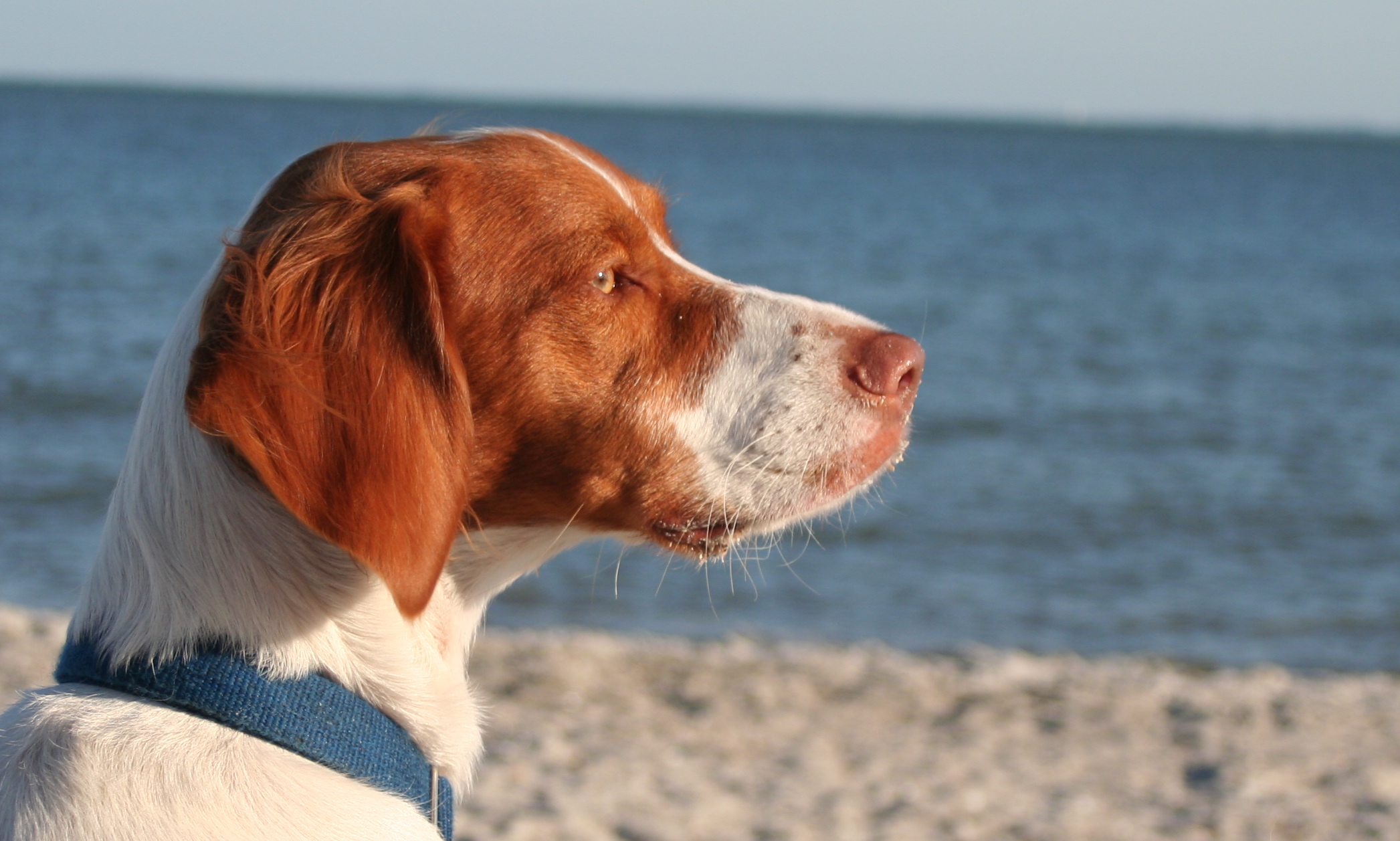
SnapShot
| Size: | Males – 44.4 to 52.1 cm (17 to 20 inches) Females – 43.2 to 52.1 cm (17 to 20 inches) |
| Weight: | Males – 20 to 23 kg (160 to 200 pounds) Females – 16 to 19 kg (140 to180 pounds) |
| Origin: | France |
| Life Span: | 14 – 15 Years |
| Colour: | range & White, Roan, Liver & White, Tri-color, Black & White, Piebald |
| Litter Size: | 1 to 11 puppies |
Is the Brittany Right For You?
Brittanys are a loyal breed with a strong desire to please their owners. Despite having an independent disposition, these dogs respond well to commands. In fact, these affable creatures thrive on human interaction and are typically jovial companions.
They like just about everyone including strangers. Brittanys that were raised around children are said to very tolerant of youngsters as are those that have been properly socialized. Other canines in the house likewise have nothing to fear from members of this breed. However, these are not as friendly towards smaller pets and may only tolerate cats if they were raised around them.
Brittanys are also quite energetic and enjoy having a task to perform. They can nonetheless be good house pets if given ample amounts of both exercise and mental stimulation. Otherwise, these dogs may become destructive.
In 5 Words
- Adaptable
- Agile
- Quick
- Happy
- Attentive
Characteristics
Learn About the Brittany
Description
General Description
These square shaped dogs are proportionate. Their rumps are somewhat lower to the ground than their withers. They are long legged and light boned, which allows them to move about easily and speedily. Brittany dogs are also well known for their trotting gait and their high levels of endurance. Members of this breed can be born without a tail but those that possess such an appendage at birth may have it shortened to be about 4 inches long. They have heavy eyebrows that are located above their ever alert eyes.
Size
American Kennel Club breed standards state that these dogs should stand between 17.5 and 20.5 inches (44.5 and 52 centimeters) at their withers or their shoulder blades. Being taller or shorter than the breed standard will result in an individual dog’s immediate disqualification at any show event. Brittany dogs also have an average weight of 35 pounds (16 kilograms). Their medium size has made them a popular breed with hunters because they are easy to transport from place to place.
Coat
Brittanys are allowed to have coats that may be either wavy or flat. Coats that are too thick are judged a fault in the show ring and may also be problematic for working dogs in the field. Standard colorations for the breed include white in combination with orange, liver, or both. Orange and liver roan patterns are also considered to be typical of this breed. Alternate colorations include black in combination with orange, white, or both. There is also a black roan version of the Brittany available. Spotted and ticked dogs are also accepted under the American Kennel Club standards.
Short History of the Brittany
This breed of dog derives its’ name from the region of France in which it originated. The ancestors of the Brittany dog are thought to have lived there as early as the first century. However, paintings and tapestries from the 1600s provided the earliest depictions of the breed.
The tailless version of the Brittany is thought to be native to the village of Pontou where it emerged in the 1850s, but those dogs that were born with tails often had them docked by their owners. Around the same time, a learned gentleman named Reverend Davies wrote a book on hunting breeds. He included a description of bobtailed pointers that were also adroit at retrieving game. The dogs he mentioned in his work have been verified as being the precursors to the modern Brittany breed.
Although examples of the aforementioned variety were first shown at the 1900 Paris Dog Show, these dogs had clearly been around for many hundreds of years. In 1907, a set of breed standards were drawn up and official recognition was granted to a male dog named Boy. By the early 1930s, these dogs had made their way to America. They were awarded official status by the American Kennel Club later in the same decade. Although these dogs had previously been known as Brittany Spaniels, the latter portion of their name was removed in the 1980s so that they currently are just called “Brittanys”.
Temperament
Brittanys are a loyal breed with a strong desire to please their owners. Despite having an independent disposition, these dogs respond well to commands. In fact, these affable creatures thrive on human interaction and are typically jovial companions.
They like just about everyone including strangers. Brittanys that were raised around children are said to very tolerant of youngsters as are those that have been properly socialized. Other canines in the house likewise have nothing to fear from members of this breed. However, these are not as friendly towards smaller pets and may only tolerate cats if they were raised around them.
Brittanys are also quite energetic and enjoy having a task to perform. They can nonetheless be good house pets if given ample amounts of both exercise and mental stimulation. Otherwise, these dogs may become destructive.
Caring for Your Brittany
General Health
There are a few health problems that are known to frequently occur in this breed. Epilepsy, cataracts, and cleft palates are not uncommon. Hip dysplasia, a joint malfunction that may require corrective surgery, can also be problematic. Another ailment that is often seen in Brittanys is hypothyroidism, a condition that is brought about by malfunctioning thyroid glands.
Care
Daily
When they are not hunting, these dogs need to be taken out for exercise on a daily basis. At least one hour of activity per day is recommended in order to keep Brittanys from becoming hyperactive or otherwise poorly behaved.
Weekly
These dogs need to be combed at least once or twice per week.
Monthly
Once a month owners will need to administer medications for the prevention of heartworms, fleas, and ticks.
Grooming & Bathing
These dogs should have their toenails trimmed and their teeth brushed on a regular basis. Brittanys will only need to be bathed if they get especially grimy.
Exercise & Training
Members of this breed are obedient and easy to train with gentle, corrective methods. They need consistent leadership and clearly defined rules to follow. Shyness and neurotic behavior can arise in dogs that do not understand their place in the family. Early socialization is recommended for Brittanys so that they don’t fall prey to such undesirable traits. It is very important that these dogs get adequate amounts of regular exercise to keep them from indulging in destructive behaviors, which can easily become a bad habit.
Brittanys need briskly paced activity to keep them entertained. They may enjoy lively games of fetch, jogging around the local park, and swimming at nearby beach areas. They will even retrieve balls that are thrown in the water. Members of this breed can easily fulfill their traditional role as a gun dog but they also excel at various types of dog sports. Due to their pronounced hunting instincts, Brittanys should not be allowed to wander around off their leashes unless they are in a secure location where they are being closely supervised.

